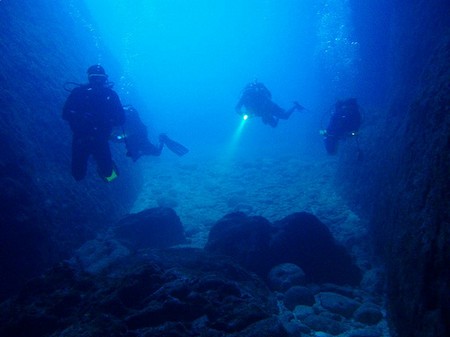Why use a light?
If you are diving in conditions with poor visibility it will be dark underwater. A diving light will help you see and be seen. If you are going to explore inside a shipwreck, a light (plus a spare) is essential. If you are diving at night, a light as well as a stand-by securely clipped off in a pocket must be part of your equipment. However, you don’t need to carry a really bright light for either of those purposes.
You may be surprised to learn that a powerful light will also help you enjoy a daylight dive on a tropical reef in brilliant sunlight. This is because water filters out the colour from the ambient light at depth and everything looks muted, that is, until you shine a powerful beam of white light on it. Objects that look brown or black often turn out to be a vibrant crimson once illuminated by a light source.
Types of diving lights
Cheaper diving lights use readily available alkaline dry-cell batteries, and as each cell equals 1.5 volts, it is easy to work out the maximum voltage available. These
Rechargeable cells include Ni-cad and NiMh. They are available in both 6-volt and 12-volt sizes. NiMH cells have advantages over old-fashioned Ni-cads in that they can be recharged at any state without creating a memory effect. That means you can always be sure to start a dive with a fully charged light.
The more expensive lights usually have aluminium bodies and large batteries. This means they often still weigh quite a lot even when submerged The better ones come with neoprene sleeves to help negate this effect.
Keeping water out of airspaces in equipment submerged to great pressure, as you do when you go diving, is a problem. The more openings a light has in its case, the more opportunities there are for a disastrous leak. Openings are sealed using neoprene O-rings. Lights that have user serviceable O-rings can be problematic if the O-ring is not kept scrupulously clean and lightly greased.
Some lights have to be opened up to recharge them, whereas others can be charged using external connections that neatly avoid the problems involved in opening up the light.
Umbilical lights separate the heavy battery pack from the bulb head. This means the battery pack replaces the lead on your belt and the bulb head is light and easy to handle. Big hand-held lights tend to be heavy, which can lead to buoyancy problems if you put one down during a dive.
